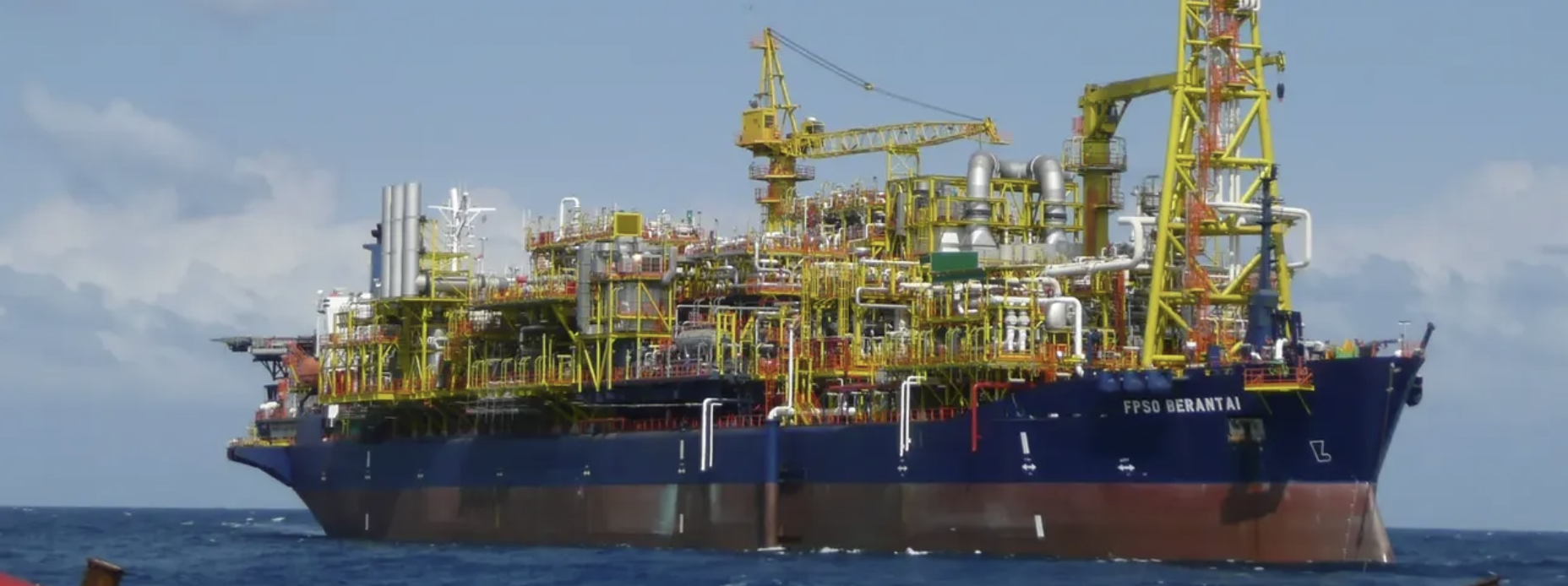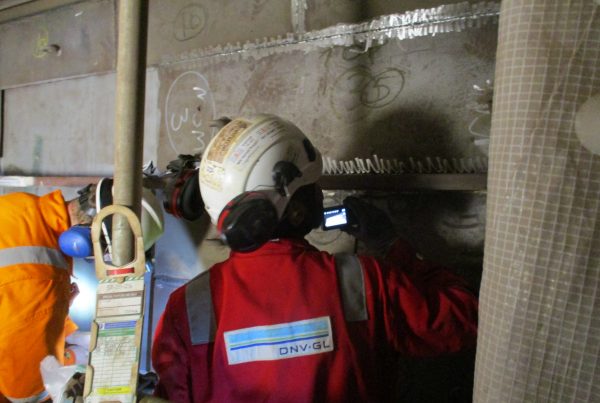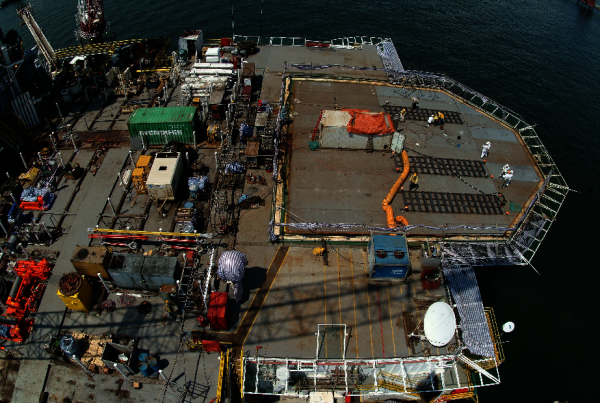FPSO and FSO operators are facing increasing pressure to reduce downtime and extend the life of their assets. In this interview, Asian Sealand Offshore and Marine’s Benson Tai shares how his team are utilising SPS to keep their clients’ assets in service while delivering class-approved permanent repairs.
Q: How do you think SPS is positioned as an alternative, in-situ solution to conventional crop and renew on FPSOs and FSOs?
Benson Tai: SPS is a well-positioned alternative to the conventional crop and renew method for structural repairs on FPSOs and FSOs. It’s chosen for its clear safety advantages, as its in-situ approach eliminates the need for extensive scaffolding and rigging required by conventional methods, allowing for repairs to be conducted directly on the asset.
Traditional crop and renew is well established, but it can be complex, labour-intensive, and carries higher safety exposure due to extensive hot work, especially in offshore environments. Compared to traditional methods, SPS is quicker, safer, requires fewer resources, and is fully class-approved. SPS also allows repairs to be done without hot work on the external hull, thereby minimizing the risk, disruption, and downtime. This makes it highly advantageous for operating FPSOs and FSOs, where access, safety, and operational continuity are critical.
Q: Why is SPS selected over more traditional repair methods?
BT: SPS is selected over traditional repair methods because it provides a safer, more efficient, and predictable solution.
Unlike crop and renew, which often require cutting large holes in the side shell, removing insulation, pipes, or even rerouting cables to gain access, SPS uses the existing plating as part of the solution. We install a new plate, create a cavity, and inject the elastomer to form the sandwich panel — all without the disruptive preparation work that conventional steel renewal demands.
A key reason for its selection is its flexibility, as it offers either a hot or cold-work approach depending on the specific site requirements and the criticality of the location. It’s a cold-work, in-situ repair method that requires little to no hot work, which is a critical safety benefit that significantly reduces the risk of fire and explosion. This allows repairs to be performed without shutting down critical production and incurring costly downtime.
SPS is non-intrusive, minimally disruptive, and provides a permanent Class-approved solution, particularly ideal for tanks and structural areas that are difficult to access or time-sensitive to repair.
Q: What are the key benefits to the Client when they choose SPS?
BT: First, safety — SPS reduces disruption offshore by minimizing hot work and avoiding extensive access works like cutting into side shells or removing insulation, piping and cables.
Second, efficiency — the process requires fewer resources and achieves a much faster turnaround than conventional repairs.
Third, it’s a straightforward process — a simple, repeatable installation of cavity installation and elastomer injection.
Fourth, performance — SPS not only restores but can enhance structural strength while improving fatigue resistance.
Fifth, it has class approval, so operators know it’s fully compliant with necessary requirements.
And finally, predictability — SPS consistently delivers reliable repair outcomes, giving clients confidence in both execution and long-term integrity.
Q: How do you approach the planning and execution when projects are being run worldwide?
BT: Our approach blends global consistency with local adaptability. Projects begin with a detailed front-end assessment and interface planning with the client. Execution is supported by dedicated project managers, certified technicians, and local resources to ensure full compliance with standards, regardless of geography. Communication and risk control remain central throughout.
We empower our on-site teams to proactively solve problems and navigate regional logistics, regulations, and on-the-ground challenges for our clients. This enables us to maintain a high level of oversight while ensuring that every project is executed efficiently and successfully, regardless of its location.
Q: How do you approach the planning and execution when projects are being run worldwide?
BT: When running SPS projects worldwide, planning and execution are built around three key items: preparation, local alignment, and consistency of delivery.
We focus on detailed preparation. This means upfront engineering, understanding the repair scope, client and class engagement, and ensuring all materials, equipment, and trained personnel are aligned before mobilization. SPS is a straightforward process, but successful delivery depends on strong planning from the outset.
We also emphasize local alignment. Every region has its own regulatory, logistical, and cultural challenges. We work with clients and partners to ensure compliance and smooth coordination. This approach minimizes disruption and helps us adapt quickly to different offshore environments.
Finally, we ensure consistency of execution. SPS projects are supported by standardized procedures and experienced teams, which means the same level of quality and safety is delivered anywhere in the world. With 24/7 offshore operations, planning for work shifts, safety oversight, and continuous communication with the client is critical.
Q. SPS isn’t always the least expensive upfront. How does it compare in the bigger picture?
BT: While the initial upfront cost of an SPS repair may not always be the lowest, its true value becomes clear when you consider the overall project economics. The biggest advantage is the ability to maintain continuous production, which allows a client to generate significant revenue that would otherwise be lost during a conventional repair.
SPS makes the total cost of ownership significantly lower. Clients avoid production loss, yard stays, towing, or dry-docking. When you factor in safety, speed, and performance, SPS often pays for itself within a very short window—especially in operational environments like FPSOs, where downtime is extremely costly.
Q: Recently, ASOM has completed an SPS installation aboard FPSO Berantai in Malaysia. What were the key challenges?
BT: During the Berantai project, we faced several challenges that required careful management.
The work was carried out during the monsoon season, which presented significant challenges to the project due to adverse weather conditions and rough sea conditions. This affected the open deck repair areas, and to manage it, we had to keep shifting manpower between the engine room and the open deck so that work could continue safely and we maximized output despite the weather.
Logistics presented a challenge, as some materials did not arrive offshore on time due to adverse weather conditions. This meant resequencing tasks and working closely with the client to adjust the plan without losing progress.
Numerous other repair activities were occurring onboard simultaneously, making detailed coordination with the client essential to manage space, manpower, safety, and work sequences.
Despite these challenges, through disciplined planning, teamwork, and close client collaboration, we successfully completed the project, proving that SPS can be delivered reliably even under tough offshore conditions.
Q: In your opinion, what would be the “one thing” that SPS Technology should improve to take the business to the next level?
BT: The technology is proven—it’s now about awareness and accessibility. Even though SPS is fully class-approved and has been successfully applied worldwide, many operators still default to conventional crop and renew because it’s the method they know best. SPS is sometimes seen as a specialized alternative rather than the mainstream solution it really is.
Another area for improvement is simplifying the approvals and deployment pipeline, particularly for short-notice or smaller-scale repairs. Digital integration with Class societies, operators, and EPCs could make SPS a more automatic choice for structural integrity issues in the field.
If you’d like to learn how SPS can extend the life of your FPSOs and FSOs, get in touch with ASOM or the SPS Technology maritime team today!
Discover SPS
For the latest on our ground-breaking technology, follow the SPS Technology LinkedIn page and subscribe to our YouTube channel.




